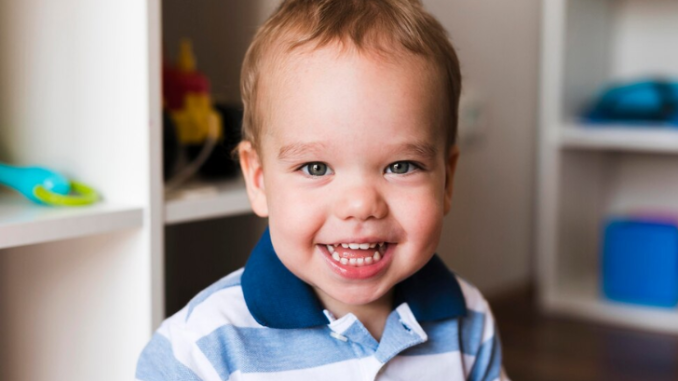
The transformation from babyhood to childhood is filled with numerous milestones, and one of the most significant is when kids start losing their teeth. It’s a fascinating process that marks a child’s growth and development, making way for their permanent teeth to emerge. But when do kids start losing teeth?
Let’s delve into the details and understand the ins and outs of this remarkable phase.
How Many Baby Teeth Do Kids Lose?
Freepik | By age 2, kids usually have 20 baby teeth. These will later be replaced by permanent ones as they grow.
Children typically have 20 baby teeth by the age of 2. As they grow, these teeth will gradually be replaced by permanent ones. The primary role of baby teeth is to hold space in the jaw for the adult teeth and help in the proper alignment as they grow in.
Structurally, baby teeth differ from adult teeth with their wider roots, thinner enamel, and larger pulp containing more nerves and blood vessels. This unique composition often makes them more sensitive to cavities and toothaches.
Understanding When Do Kids Start Losing Teeth
The journey of losing baby teeth varies for every child, but generally, the process starts around age 6 and continues until around age 12. Here’s a typical timeline for when kids start losing their teeth:
Central incisors (front teeth): 6 to 7 years
Lateral incisors (next to the front teeth): 7 to 8 years
Canines (pointed teeth): 9 to 12 years
First premolars: 9 to 11 years
Second premolars: 10 to 12 years
During this period, the first molars also begin to appear, which adds another layer to the dental development.
Early or Late Tooth Loss: Should You Worry?
While the standard age range for losing baby teeth is between 6 and 12 years, some children might experience this earlier or later. Losing teeth as early as age 4 or as late as age 7 isn’t uncommon. However, if a child starts losing many teeth early or experiences significant pain, it could indicate underlying issues that need medical attention.
Signs That a Tooth Is About to Fall Out
Freepik | Kids may not consistently experience discomfort as a tooth approaches its departure.
Children might not always feel pain when a tooth is about to fall out. Often, there’s just a bit of inflammation or a funny feeling in their mouth. They might avoid eating with that tooth or point out that it feels strange. Generally, the tooth falls out while they’re eating, and it’s usually a quick and painless process.
Trauma-Induced Tooth Loss
Accidents happen, and a fall or bump can cause a tooth to loosen prematurely. If this occurs, visiting a dentist promptly can prevent potential complications. Trauma can lead to early resorption of the tooth roots, necessitating early intervention.
Preparing for Your Child’s First Loose Tooth
As your child approaches the age where their teeth start to loosen, it’s essential to create a positive atmosphere around this change. Encourage excitement and curiosity instead of fear. The Tooth Fairy tradition can be a fun way to make this experience enjoyable.
1. Encouraging Healthy Practices
It’s natural to want to help your child remove a loose tooth, but there are healthier ways than tying strings to doorknobs. Encourage your child to gently wiggle their tooth with their tongue. This method helps ensure the gums don’t tighten back up, which could make the tooth harder to remove later on.
2. Handling the First Tooth Loss
Freepik | prostooleh | After the first tooth falls out, slight bleeding may occur. Using gauze to apply pressure can help stop it.
Once the first tooth falls out, there might be minimal bleeding. Having your child bite down on gauze can help stop the bleeding. Over-the-counter pain relievers like acetaminophen (Tylenol®) or ibuprofen (Advil®) can ease any discomfort.
Avoiding straws for a few days can prevent dislodging the blood clot that forms to heal the area. Maintaining a regular brushing routine is crucial, even around the new gap, to prevent inflammation and promote healing.
Promoting Dental Hygiene from an Early Age
Starting good dental habits early is vital. Fluoride toothpaste can help protect both baby and emerging adult teeth. Teaching children the importance of brushing and regular dental check-ups will set the foundation for a lifetime of good oral health.
By understanding when do kids start losing teeth and preparing for this natural process, you can help your child navigate this important developmental milestone with ease and confidence.
